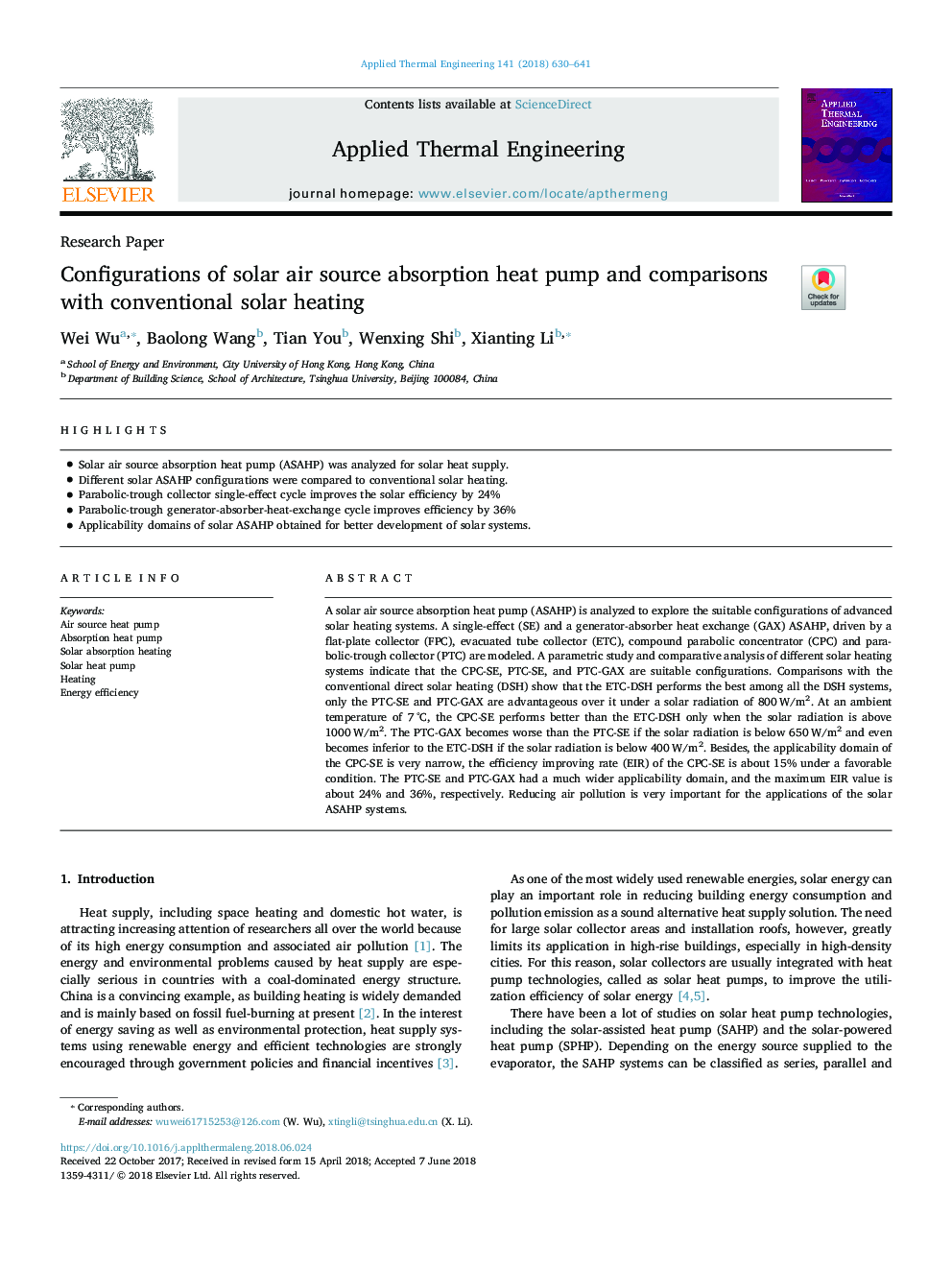| Article ID | Journal | Published Year | Pages | File Type |
|---|---|---|---|---|
| 7044982 | Applied Thermal Engineering | 2018 | 12 Pages |
Abstract
A solar air source absorption heat pump (ASAHP) is analyzed to explore the suitable configurations of advanced solar heating systems. A single-effect (SE) and a generator-absorber heat exchange (GAX) ASAHP, driven by a flat-plate collector (FPC), evacuated tube collector (ETC), compound parabolic concentrator (CPC) and parabolic-trough collector (PTC) are modeled. A parametric study and comparative analysis of different solar heating systems indicate that the CPC-SE, PTC-SE, and PTC-GAX are suitable configurations. Comparisons with the conventional direct solar heating (DSH) show that the ETC-DSH performs the best among all the DSH systems, only the PTC-SE and PTC-GAX are advantageous over it under a solar radiation of 800â¯W/m2. At an ambient temperature of 7â¯Â°C, the CPC-SE performs better than the ETC-DSH only when the solar radiation is above 1000â¯W/m2. The PTC-GAX becomes worse than the PTC-SE if the solar radiation is below 650â¯W/m2 and even becomes inferior to the ETC-DSH if the solar radiation is below 400â¯W/m2. Besides, the applicability domain of the CPC-SE is very narrow, the efficiency improving rate (EIR) of the CPC-SE is about 15% under a favorable condition. The PTC-SE and PTC-GAX had a much wider applicability domain, and the maximum EIR value is about 24% and 36%, respectively. Reducing air pollution is very important for the applications of the solar ASAHP systems.
Related Topics
Physical Sciences and Engineering
Chemical Engineering
Fluid Flow and Transfer Processes
Authors
Wei Wu, Baolong Wang, Tian You, Wenxing Shi, Xianting Li,
